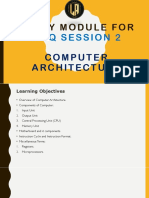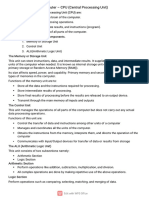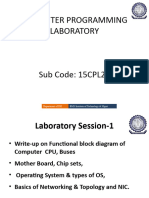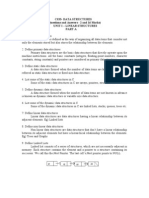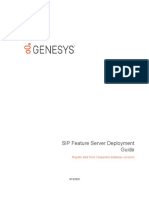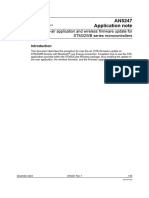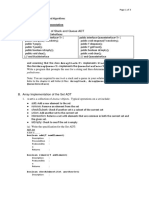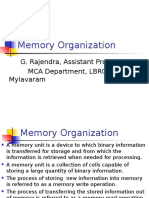0% found this document useful (0 votes)
52 views10 pagesComputer Architecture
This document summarizes the key components of computer architecture, including the input/output units, central processing unit (CPU), memory unit, and their functions. It describes how the CPU contains an arithmetic logic unit, control unit, and registers to execute instructions from memory and process data. The CPU fetches and decodes instructions, executes operations, and stores results back in memory during an instruction cycle. Performance depends on factors like register size, RAM, clock speed, bus width, and cache memory. The motherboard contains the processor, memory, and interfaces and connects the internal and external components via different types of buses.
Uploaded by
urhanCopyright
© © All Rights Reserved
We take content rights seriously. If you suspect this is your content, claim it here.
Available Formats
Download as PDF, TXT or read online on Scribd
0% found this document useful (0 votes)
52 views10 pagesComputer Architecture
This document summarizes the key components of computer architecture, including the input/output units, central processing unit (CPU), memory unit, and their functions. It describes how the CPU contains an arithmetic logic unit, control unit, and registers to execute instructions from memory and process data. The CPU fetches and decodes instructions, executes operations, and stores results back in memory during an instruction cycle. Performance depends on factors like register size, RAM, clock speed, bus width, and cache memory. The motherboard contains the processor, memory, and interfaces and connects the internal and external components via different types of buses.
Uploaded by
urhanCopyright
© © All Rights Reserved
We take content rights seriously. If you suspect this is your content, claim it here.
Available Formats
Download as PDF, TXT or read online on Scribd
/ 10

